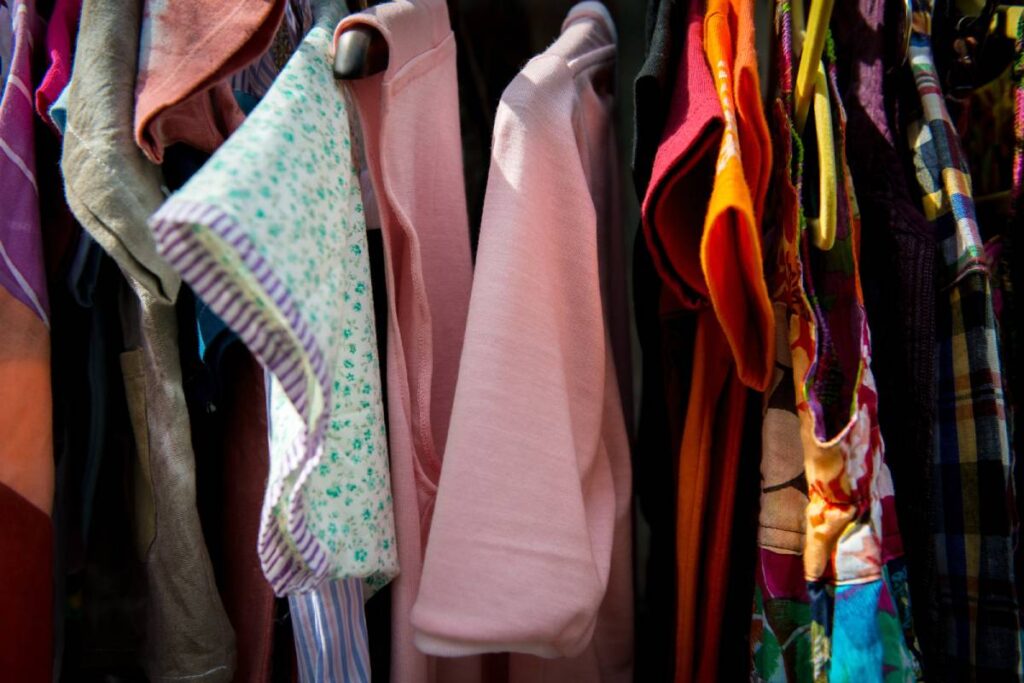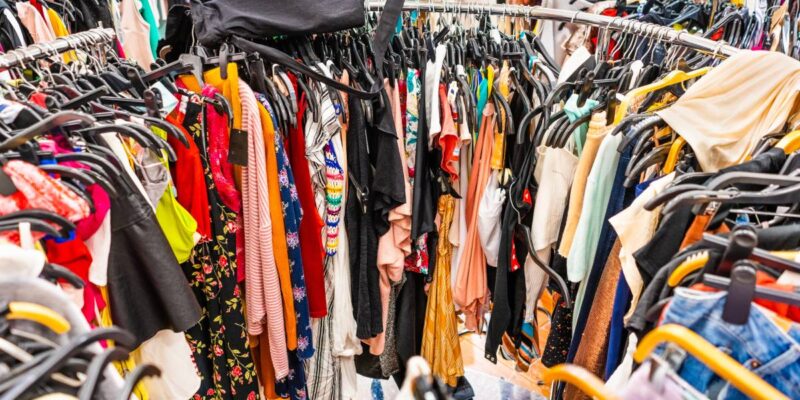“Buy less, choose well, make it last.” – Vivienne Westwood
“As consumers, we have so much power to change the world by just being careful in what we buy.” – Emma Watson
Fast fashion refers to inexpensive, easily replaceable clothing produced quickly by large-scale retailers to stay current with global trends. Its aim is to prompt frequent shopping for new styles, leading to increased consumption.
You might also read:
- What is the difference between anti-aging and anti-wrinkle cream?
- How to Pose for A Professional Headshot
What is fast fashion and why is it a problem?
Fast fashion refers to a business model in the fashion industry that prioritizes rapid production of clothing items at low costs, often imitating the latest trends seen on fashion runways or popularized by celebrities. The goal of fast fashion brands is to quickly deliver inexpensive clothing to consumers, typically through frequent releases of new collections.
How did fast fashion become a thing?
Let’s rewind a bit. Back before the 1800s, fashion was a slow game. People had to gather materials like wool or leather, prep them, weave them, and then put together their clothes.
Then came the Industrial Revolution, bringing with it cool new tech like the sewing machine. Suddenly, making clothes got way easier, faster, and cheaper. This led to the rise of dressmaking shops, especially for the middle class.
A lot of these shops hired teams of garment workers or even people working from home. But with this came some problems, like sweatshops and safety issues. One of the first big disasters was the Triangle Shirtwaist Factory fire in New York in 1911. It killed 146 garment workers, many of them young immigrant women.
Jumping ahead to the 1960s and ’70s, young folks started setting trends, and clothing became a way to show off your personality. But there was still a gap between fancy designer fashion and what you’d find on the regular street.
Then, in the late 1990s and 2000s, cheap fashion hit its peak. Online shopping became huge, and brands like H&M, Zara, and Topshop took over. They’d snatch up the latest looks from top designers and churn out cheap versions super fast. With everyone being able to snag trendy clothes whenever they wanted, it’s no wonder fast fashion took off like it did.

How is it a problem?
While fast fashion offers affordability and a wide range of styles, it also poses several significant problems:
- Environmental Impact: Fast fashion production relies heavily on cheap, low-quality materials and rapid turnover of clothing items, leading to high levels of waste generation and environmental pollution. The use of synthetic fibres, chemical dyes, and large amounts of water contribute to the pollution of waterways and soil degradation. Additionally, the carbon footprint from transportation and manufacturing processes is substantial.
- Labour Exploitation: Fast fashion brands often outsource production to countries with low labour costs, where workers are subjected to poor working conditions, low wages, and long hours. This can include unsafe factories, child labour, and lack of labour rights.
- Ethical Concerns: The pressure to produce cheap clothing quickly can lead to unethical practices such as plagiarism of designs, disregard for intellectual property rights, and exploitation of cultural symbols without proper acknowledgement or compensation.
- Overconsumption: Fast fashion encourages a culture of overconsumption, where clothing items are treated as disposable commodities rather than long-term investments. This leads to excessive consumption of resources and contributes to a throwaway mentality, exacerbating the environmental impact.
- Social Impacts: The constant turnover of fashion trends promoted by fast fashion can perpetuate unrealistic beauty standards and fuel consumerism, impacting individuals’ self-esteem and mental well-being.
Overall, the fast fashion industry’s focus on mass production, rapid turnover, and low prices have significant negative implications for the environment, labour rights, and society as a whole. Efforts towards sustainability, ethical production practices, and conscious consumerism are essential to address these issues.

Why do people like fast fashion?
In case you might wonder if it’s really bad in many aspects, why do people still support fast fashion? Why is it still a thing today?
Well, there are several factors contribute to the popularity of fast fashion among consumers:
- Affordability: Fast fashion brands offer clothing items at lower prices compared to traditional fashion retailers. This affordability makes trendy and fashionable clothing accessible to a broader range of consumers, including those on a tight budget.
- Variety and Trends: Fast fashion brands quickly replicate current fashion trends seen on runways, in magazines, and on social media. They offer a wide variety of styles, colours, and designs, allowing consumers to experiment with different looks and stay up-to-date with the latest trends without breaking the bank.
- Convenience and Accessibility: Fast fashion retailers often have a large number of physical stores as well as online platforms, making it convenient for consumers to shop for clothing anytime and anywhere. The accessibility of fast fashion brands through online shopping platforms enables quick and easy purchasing with just a few clicks.
- Frequent New Releases: Fast fashion brands release new collections frequently, sometimes even weekly, which creates a sense of excitement and urgency among consumers to purchase the latest styles before they sell out. This constant turnover of inventory encourages frequent visits to stores or online platforms and promotes impulse buying.
- Social Media Influence: Social media platforms play a significant role in promoting fast fashion trends and brands. Influencers and celebrities often showcase fast fashion clothing in their posts, influencing their followers’ purchasing decisions and creating a desire to emulate their style.
- Perceived Value: While fast fashion clothing may be low in price, it can still give consumers a sense of value and satisfaction, especially when they can purchase trendy items at a fraction of the cost of high-end designer brands.
- Peer Pressure and Social Norms: In some social circles, there may be pressure to keep up with the latest fashion trends and look stylish. Fast fashion offers an accessible way for individuals to conform to these social norms and fit in with their peers.
Overall, the combination of affordability, variety, convenience, social influence, and perceived value makes fast fashion appealing to many consumers, despite the ethical and environmental concerns associated with the industry.

What is considered fast fashion?
Fast fashion encompasses a broad range of fashion retailers and brands that prioritize rapid production, quick turnover of inventory, and affordability. While there is no strict definition, certain characteristics are commonly associated with fast fashion:
- Rapid Production: Fast fashion brands aim to bring new clothing collections to market quickly, often within a few weeks of a trend emerging. This involves streamlining the production process, from design to manufacturing, to minimize lead times.
- Frequent Releases: Fast fashion brands release new clothing collections frequently, sometimes as often as weekly or bi-weekly. This constant turnover of inventory creates a sense of urgency among consumers to purchase the latest styles before they sell out.
- Imitation of Trends: Fast fashion brands closely follow current fashion trends seen on runways, in magazines, and on social media. They quickly replicate popular styles and designs at a lower price point, making them accessible to a wider audience.
- Affordable Pricing: One of the hallmarks of fast fashion is its affordability. Clothing items from fast fashion brands are typically priced lower than those from traditional fashion retailers, making trendy and fashionable clothing accessible to a broader range of consumers.
- Mass Production: Fast fashion relies on large-scale production methods to meet consumer demand quickly. This often involves outsourcing manufacturing to countries with lower labour costs, where production can be carried out more cheaply and efficiently.
- Disposable Fashion Mentality: Fast fashion promotes a culture of disposable fashion, where clothing items are treated as short-term, disposable commodities rather than long-term investments. Consumers are encouraged to frequently update their wardrobes with new purchases, contributing to overconsumption and waste.
Some well-known examples of fast fashion brands include Zara, H&M, Forever 21, Primark, Fashion Nova, and SHEIN among others. However, it’s worth noting that not all affordable fashion brands are necessarily considered fast fashion, as factors such as production ethics, sustainability practices, and transparency in the supply chain also play a role in determining a brand’s classification.
What actions can we take?
The first step is to buy less. Rediscovering the joy in the clothes you already own by styling them differently or swapping them with friends can be a great start. You might also consider creating a capsule wardrobe or renting outfits for special occasions instead of buying something new for just one wear.
The second step is to choose well. Opting for high-quality garments made from materials with a lower environmental impact is important. While every fabric type has its pros and cons, referring to a helpful chart can guide you in making sustainable choices when shopping.
Lastly, we need to make our clothes last. This involves following care instructions, wearing items until they’re worn out, repairing them when possible, and responsibly recycling them at the end of their life cycle.










Comments